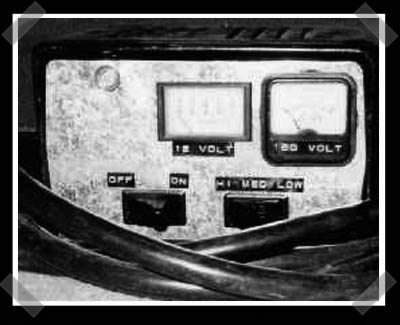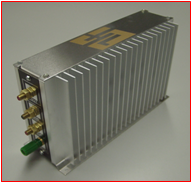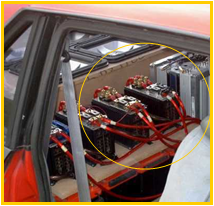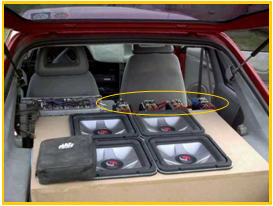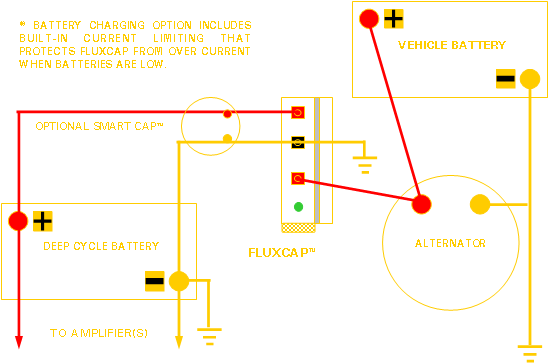And if this is just too big a question to answer here, please direct me to a place that I can learn more.
So, while surfing around looking at 12 volt lithium batteries, I saw a bunch of lithium batteries that were like 36 volts, 50 something volts, and even more ! One of them put out 6 Kwts at 50+ volts, and was only like $400.... and NOT huge, or particularly heavy either. So, being the electrical dummy that I am, I was thinking, "Geez, 6 Kwts at 50+ volts, sounds ridiculous ! So, if that were stepped down to like 15.8 volts, wouldn't the wattage go way up ? ....to like 25 Kwts, or something ridiculous ? Because "IF" that is the case, their is thing called a "buck converter" that is both cheap, and easy to buy, or even to build DIY. (actually, even if the wattage stayed the same, 6 Kwts is double of what my current system pulls)
But here's the part that gets me the most fired up about the whole thing.... I have this peeve about voltage that fluctuates, and drops when a system is being beat on. That just bugs the living chit out of me ! IF we have determined that an amplifier setup will put out the most safe, efficient power at, lets just say 15.8 volts, then I want my system to put out 15.8 volts ALL THE FREAKING TIME ! Period. Whether I'm beating the chit out of it, on a hot day, not reving the motor, whatever.
So why couldn't a person run a 36 volt, or higher... maybe much higher system, then step it down to the "optimum voltage" required for the amp setup ? It seems to me that the 36 volt or higher battery, might fluctuate and sag somewhat, under a heavy load... but that it would still always be able to be stepped down to exactly 15.8 volts. (until that higher voltage battery dropped below its safe point.... but it should give you a TON of power before it gets to that)
Tell me why this wont work, or why nobody is doing it (that I know of).
PS, BTW, I have a 350 volt battery in my Prius, which is stepped all the way down to 14.5 volts with a converter, and then to a "dinky" little factory 12 volt battery (with no alternator in the car). Now granted, my little 5 ch Kicker amp only puts out about 900 wts. But I've heard these little Prius' can handle a setup of 2000-3000 wts. Not huge... but the point is, it does this with ZERO voltage sag, flickering lights, or anything like that.... WITH THE CAR MOTOR NOT EVEN RUNNING ! The voltage to the amplifier is ROCK freaking solid, because its being converted from a 350 volt source !
This ^ is what I'm talking about, but with a stronger setup, built for the purposes of a high powered stereo. Can this be done ???
So, while surfing around looking at 12 volt lithium batteries, I saw a bunch of lithium batteries that were like 36 volts, 50 something volts, and even more ! One of them put out 6 Kwts at 50+ volts, and was only like $400.... and NOT huge, or particularly heavy either. So, being the electrical dummy that I am, I was thinking, "Geez, 6 Kwts at 50+ volts, sounds ridiculous ! So, if that were stepped down to like 15.8 volts, wouldn't the wattage go way up ? ....to like 25 Kwts, or something ridiculous ? Because "IF" that is the case, their is thing called a "buck converter" that is both cheap, and easy to buy, or even to build DIY. (actually, even if the wattage stayed the same, 6 Kwts is double of what my current system pulls)
But here's the part that gets me the most fired up about the whole thing.... I have this peeve about voltage that fluctuates, and drops when a system is being beat on. That just bugs the living chit out of me ! IF we have determined that an amplifier setup will put out the most safe, efficient power at, lets just say 15.8 volts, then I want my system to put out 15.8 volts ALL THE FREAKING TIME ! Period. Whether I'm beating the chit out of it, on a hot day, not reving the motor, whatever.
So why couldn't a person run a 36 volt, or higher... maybe much higher system, then step it down to the "optimum voltage" required for the amp setup ? It seems to me that the 36 volt or higher battery, might fluctuate and sag somewhat, under a heavy load... but that it would still always be able to be stepped down to exactly 15.8 volts. (until that higher voltage battery dropped below its safe point.... but it should give you a TON of power before it gets to that)
Tell me why this wont work, or why nobody is doing it (that I know of).
PS, BTW, I have a 350 volt battery in my Prius, which is stepped all the way down to 14.5 volts with a converter, and then to a "dinky" little factory 12 volt battery (with no alternator in the car). Now granted, my little 5 ch Kicker amp only puts out about 900 wts. But I've heard these little Prius' can handle a setup of 2000-3000 wts. Not huge... but the point is, it does this with ZERO voltage sag, flickering lights, or anything like that.... WITH THE CAR MOTOR NOT EVEN RUNNING ! The voltage to the amplifier is ROCK freaking solid, because its being converted from a 350 volt source !
This ^ is what I'm talking about, but with a stronger setup, built for the purposes of a high powered stereo. Can this be done ???



